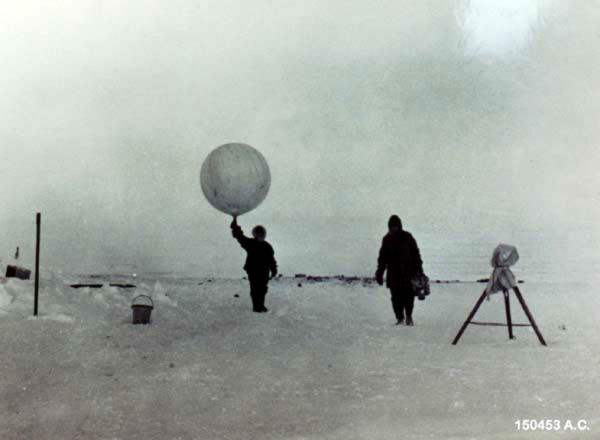Modern weather forecasting capabilities are also the product of military technology transfer. The importance of weather forecasting became critically important due to military aviation activities, especially during World Wars I and II. In the early days of weather forecasting, balloons were used to collect most atmospheric data. The US Army Communications-Electronics Command (CECOM) and its predecessor organizations launched the first radio-equipped weather balloon in 1928 and developed most of the equipment now used by the National Weather Service as well as that used by the Department of Defense. The US Army’s electronics laboratories developed the first radar and Doppler Radar, which is now used to locate tornadoes for weather forecasting.

Releasing a Weather Balloon - circa 1945.
Radiosonde Observation Station Meeks Field, Keflavik, Iceland.
Photo: US Army Air Corps.
National Archives and Records Administration.
Still Picture Branch; College Park, Maryland.